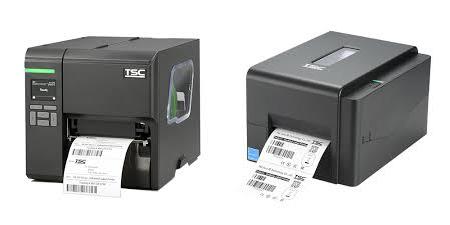Industrial printers are crucial for high-volume operations in sectors like manufacturing, logistics, and warehousing. In 2023, the global industrial printer market reached USD 75.6 billion and is projected to grow to USD 103.5 billion by 2031 at a CAGR of 4.3%.
These machines can produce over 100,000 labels or tags daily while ensuring consistent quality and reliability. Their increasing demand underscores their role in supporting large-scale production and maintaining operational efficiency.
PrimeTech Global offers a complete range of industrial TSC printers, ensuring businesses have immediate access to the right printing solutions. With all models in stock, we help companies avoid procurement delays and keep operations running smoothly.
Download the PDF of TSC industrial printers sold by PrimeTech Global here.
Industrial and Desktop Printer Comparison

Understanding the key differences between industrial and desktop printers helps businesses select the right tools for their operations. Key distinctions include print volume, durability, size, and functionality.
Print Volume: Designed for Different Needs
Industrial printers are built to handle large workloads, supporting label rolls up to 8 inches in diameter. These machines can operate continuously through entire shifts, producing over 10,000 labels per hour. This capability reduces downtime and improves productivity, making them ideal for high-demand environments such as logistics centres and manufacturing facilities.
Desktop printers cater to lower-volume printing needs. With the capability to produce up to 500 labels per hour, they excel at managing smaller batches efficiently. Their compact size and quick media-change features make them ideal for retail counters, offices, and other small-scale operations. While they offer reliable performance for moderate workloads, they are not built to handle the demands of industrial-scale tasks.
Durability: Built for Specific Environments
Industrial printers feature durable metal frames and high-grade components, enabling them to operate continuously for up to 24 hours. They perform reliably in extreme conditions, including temperatures from -5°C to 50°C and high-humidity environments. Features such as dust-proof casings and fanless designs protect them from debris, ensuring long-term performance in warehouses and factories.
Desktop printers are optimised for lighter workloads in controlled environments. Featuring plastic casings and a recommended duty cycle of 500 to 1,000 labels per day, they are well-suited for offices and retail settings. Although dependable for occasional or moderate use, their construction and design are not intended for continuous or heavy-duty operations in industrial environments.
Size: Choosing the Right Printer for Your Space
Industrial printers are larger and heavier, often exceeding 500mm in width and weighing more than 15kg. Their size accommodates large label rolls and supports uninterrupted operation, making them suitable for spacious facilities like warehouses and production floors.
Desktop printers, measuring under 300mm in width and weighing between 3 to 5kg, are ideal for space-constrained areas such as retail counters and medical offices. However, their smaller size limits their capacity, typically supporting label rolls up to 5 inches in diameter and smaller daily output.
Operational Efficiency and Cost
Industrial printers minimise downtime through their ability to handle large rolls and operate continuously. Their durable design reduces the need for frequent maintenance, lowering operational costs over time.
Desktop printers come with a lower upfront cost, making them suitable for businesses with occasional printing needs. However, their limited capacity and higher maintenance requirements for high-output tasks can result in increased long-term costs for demanding applications.
Advanced Features: Enhancing Productivity
Industrial printers often include advanced features such as RFID encoding, Wi-Fi connectivity, and integration with enterprise systems. These capabilities improve traceability, enable remote monitoring, and streamline workflows, making them valuable tools for industries that rely on efficient, data-driven operations.
Desktop printers typically lack these advanced functionalities, limiting their versatility in complex workflows.
Conclusion
Industrial printers provide the performance, durability, and features required for large-scale operations. Selecting the right printer for your specific needs ensures optimised productivity, reduced costs, and seamless operations. For demanding applications, industrial printers remain the superior choice. PrimeTech Global keeps a full stock of industrial TSC printers, ready for immediate dispatch. Avoid delays and keep your operations running smoothly—explore our range today. Visit PrimeTech Global to explore a range of industrial printers tailored for your business needs.
Download the PDF of TSC industrial printers sold by PrimeTech Global here.
